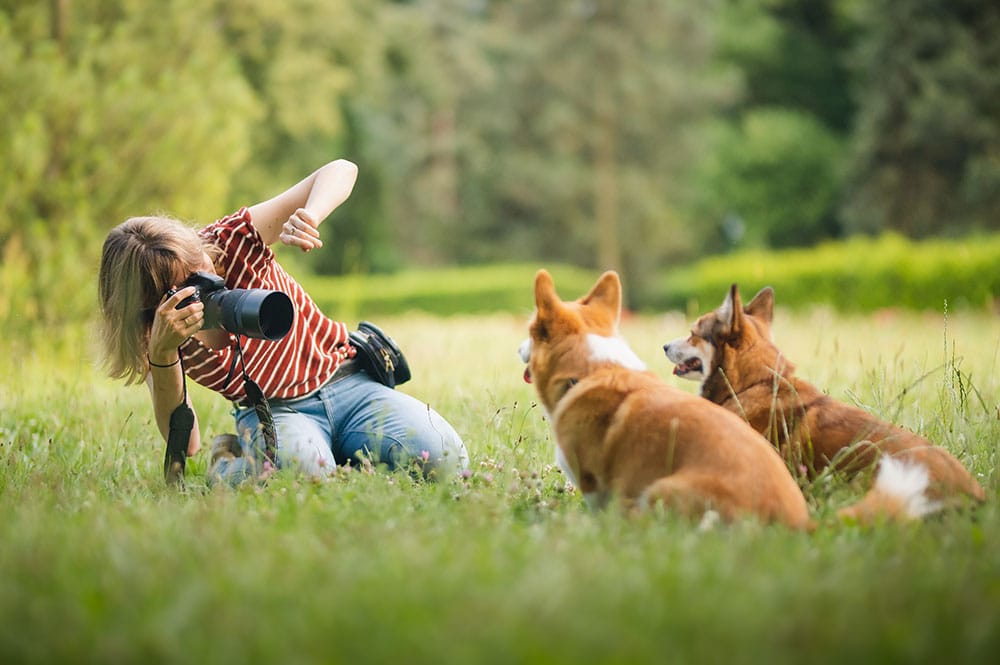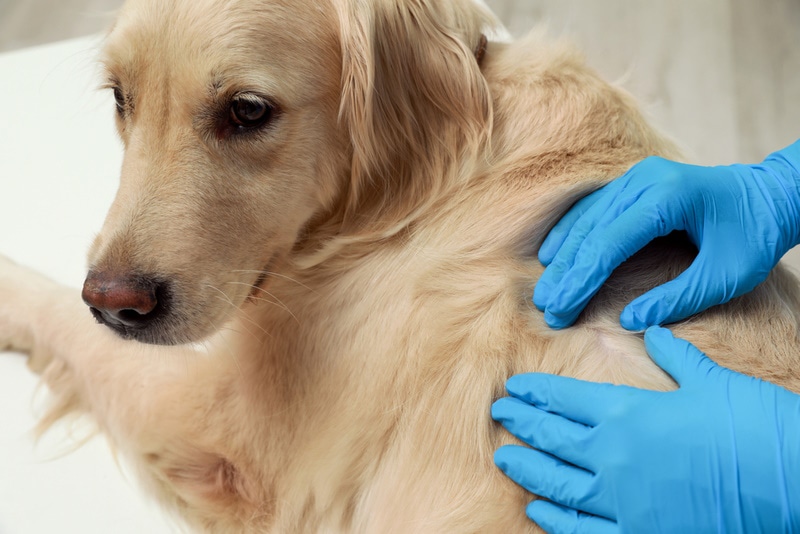5 Samoyed Colors (With Pictures)

Updated on
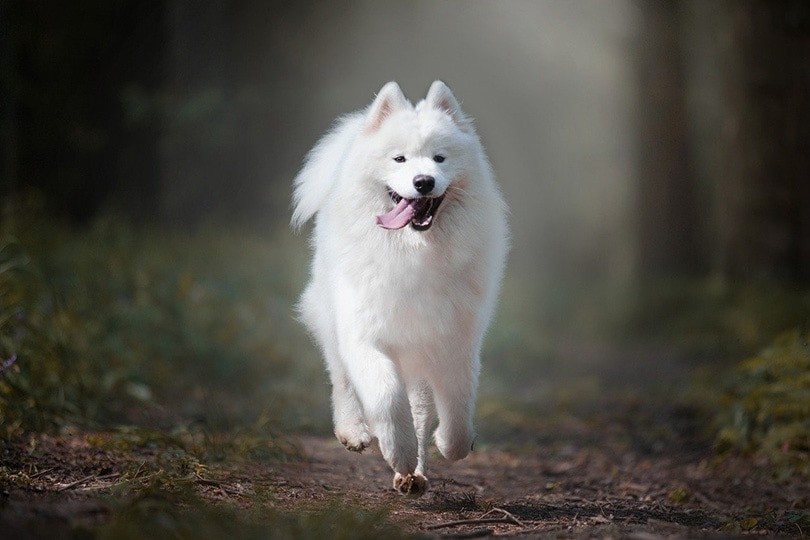
The Samoyed, affectionately known as the “Smiling Sammy,” is a breed of large herding dog with a friendly and gentle disposition. Originating from Siberia, these dogs were bred by the Samoyedic people for herding reindeer and pulling sleds. Samoyeds are renowned for their stunning white coats, but they come in a variety of other colors too. Let’s dive in and explore the different Samoyed colors.
The 5 Samoyed Colors
1. White
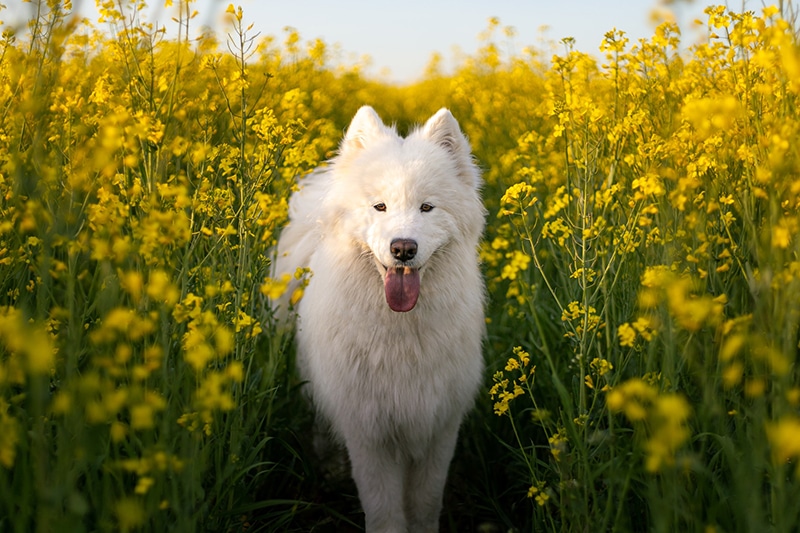
The pristine, snow-white coat is the signature and most common color of Samoyeds. This stunning shade stands in beautiful contrast to their dark eyes and lips, giving them a captivating appearance. The coat isn’t just for aesthetics; it’s double-layered and dense, offering these dogs much-needed insulation against severe weather conditions.
2. Biscuit

Biscuit-colored Samoyeds exhibit charming patches of light brown or beige hues, typically noticed on the back and ears. The biscuit color can vary from a very light cream shade to a rich, warm brown, adding to their unique appeal. The distribution of the biscuit color differs in each dog, making every biscuit Samoyed distinctively beautiful.
3. Cream
Cream Samoyeds are a delightful variant that falls between the white and biscuit-colored Samoyeds in terms of shade. Their overall coat displays a creamy hue that can either be evenly spread across their body or appear as sporadic patches, adding an extra touch of charm to their appearance.
4. White & Biscuit
A gorgeous amalgamation of white and biscuit colors can be seen in some Samoyeds. These dogs flaunt a primarily white coat interspersed with patches of biscuit color. The biscuit patches differ in placement and size across different dogs, adding to their uniqueness and individuality.
5. Silver-Tipped
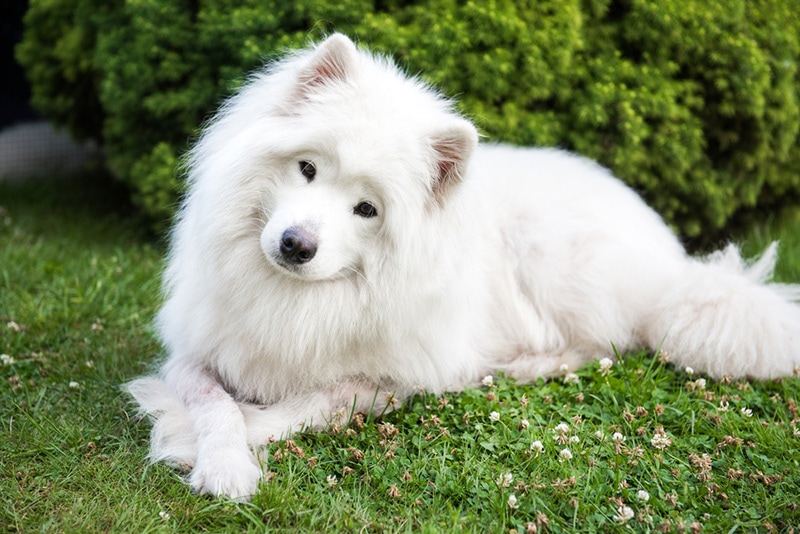
Silver-tipped Samoyeds are a rare and spectacular sight. In this variant, the Samoyed’s fluffy white coat is adorned with silver tips, giving them a radiant, almost ethereal glow. This shimmering look is truly breathtaking and adds an extra dash of majesty to their already regal appearance. Of the Samoyed coat colors, this is the only one that is not recognized as part of the American Kennel Club breed standard for Samoyeds.
How Samoyeds Get Their Colors
Dogs get their color through a fascinating process that involves melanocytes, pigment cells that surround each hair follicle. These melanocytes produce and transfer the pigment melanin into developing hairs, which then reflect certain colors based on the type and amount of pigment present.
There are two types of pigments that influence a dog’s coat color: eumelanin, which produces black or brown pigments, and pheomelanin, responsible for red or yellow colors. The distribution and amount of these pigments are controlled by a gene named Agouti-signaling protein (ASIP).
However, a dog’s final coat color isn’t solely determined by these pigments. Other factors come into play, including dominant and recessive colors inherited from both parents, dilution factors, and others. For instance, a puppy may be born with a soft coat of one color, but as it matures and its adult coat comes in, the color can slightly change.
Genetic testing can provide insight into a dog’s true color inheritance, revealing the complex interplay of genes that contribute to its coat color. It’s estimated that around ten genes are involved in defining a dog’s coat color, making each dog’s coloration a unique genetic tapestry.
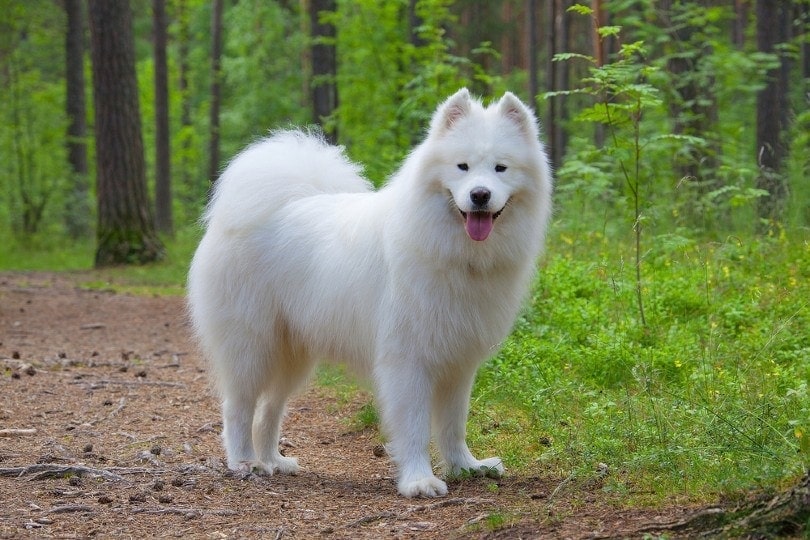
Care Tips for Samoyeds
Regardless of their coat color, all Samoyeds require regular grooming due to their thick, double coat. Brushing at least once a week is necessary to keep their coat healthy and prevent matting. During the shedding season, more frequent brushing may be required.
Samoyeds are active dogs that need regular exercise to maintain their health and happiness. Daily walks, playtime, and mental stimulation through training or games are essential. When it comes to nutrition, a balanced diet suitable for large breed dogs should be provided. If your Samoyed has any specific dietary needs or restrictions, it’s best to consult with a vet.
Other FAQs About the Samoyed Coat
Q: What are the recognized colors for Samoyeds?
A: The American Kennel Club recognizes four colors for Samoyeds: white, biscuit, cream, and white & biscuit.
Q: Is pure white the most common color for Samoyeds?
A: Yes, the most common color for Samoyeds is pure, snow-white. This color perfectly complements their dark eyes and lips, creating a striking contrast.
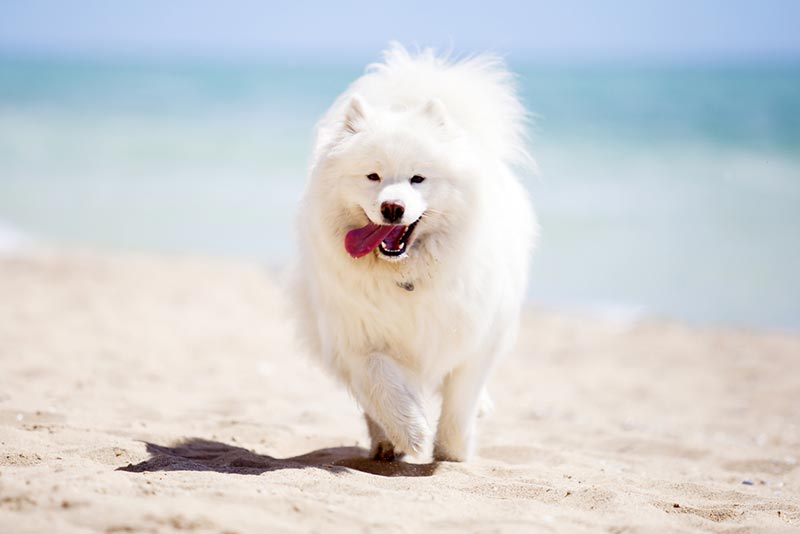
Q: How does a Samoyed’s coat protect them from harsh weather?
A: The Samoyed coat is thick and double-layered, providing insulation against harsh weather conditions. This is particularly beneficial for a breed that originated in Siberia.
Q: Do black Samoyeds exist?
A: No, black is not a recognized color for Samoyeds. If a breeder claims to have a black Samoyed, it is likely not a purebred.
Q: Does the color of a Samoyed affect its price?
A: Generally, the price of a Samoyed puppy is influenced by factors such as lineage, breeder reputation, and location, rather than coat color. However, it is possible for rarer coat colors (like the silver-tipped) to cost more if they are in high demand.
Q: Can you predict the color of a Samoyed puppy based on its parents’ colors?
A: While genetics play a role in determining a puppy’s coat color, it’s not always a guarantee. A litter can have a mix of white, cream, and biscuit puppies, regardless of the parents’ colors.
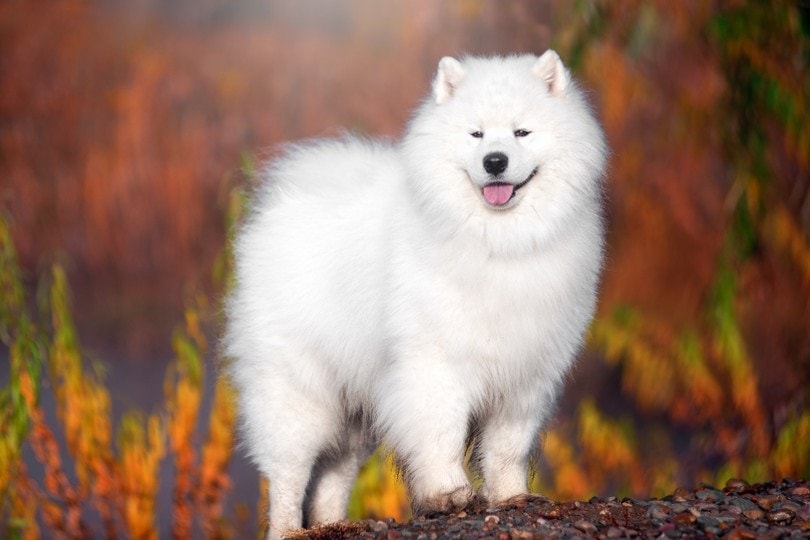
Final Thoughts
The color of a Samoyed’s coat is one of many factors that make this breed so visually striking. However, it’s essential to remember that owning a pet goes beyond their physical appearance. Regardless of their coat color, all Samoyeds are known for their friendly disposition and require regular exercise, good nutrition, and plenty of love and attention.
See Also:
- How Long Do Samoyeds Live? Average Lifespan, Data & Care
- How Big Do Samoyeds Get? Average Weight & Growth Chart
Featured Image Credit: xxxnik, Pixabay

